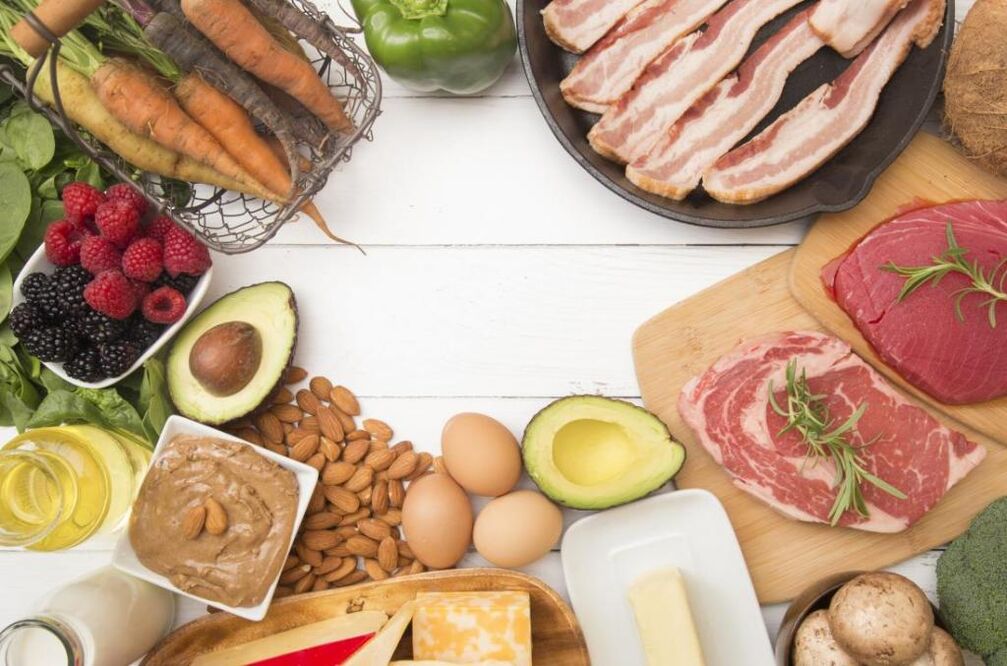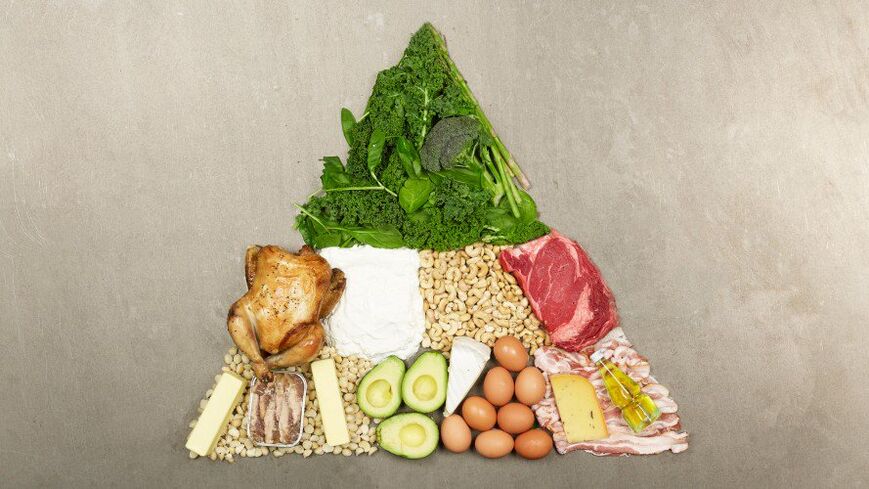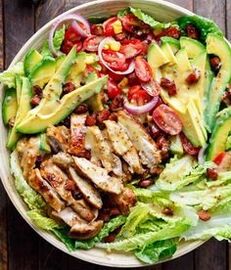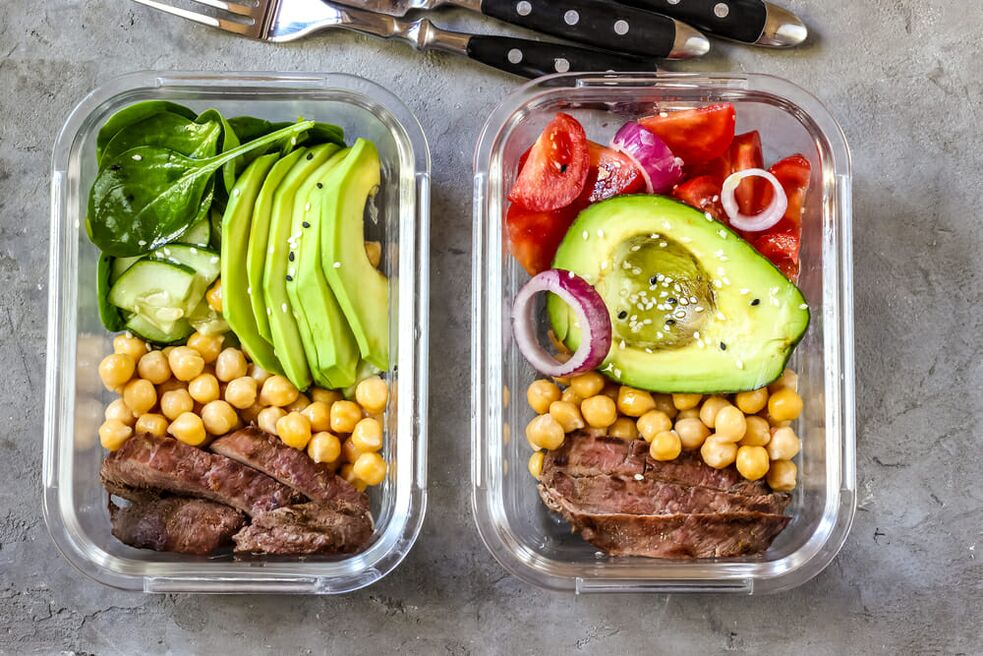
The holidays are just around the corner, which means that the season of “lose weight for the corporate party” begins right now.Everyone who did not manage to get into the desired shape by summer or gained everything back from the Turkish abundance of five-star all-inclusive hotels has already bought a subscription to a fashionable fitness club and is looking for an effective diet.They should pay attention to the currently popular and well-proven keto diet.
From a complete rejection of fats to their uncontrolled consumption
More recently, at the end of the 20th century, fats were isolated and persecuted - everyone who was losing weight completely excluded them from their diet, switching to a relatively balanced low-calorie diet.
After low-calorie diets, overweight people switched to protein diets - Dukan, Atkins.
And in recent years, the high-fat keto diet has begun to gain popularity with its almost complete exclusion of carbohydrates, strict control over protein and the uncontrolled consumption of fats that were recently disgraced.
What is this?Another fashion trend or a new and effective way to quickly lose weight and keep it under control?Let's try to figure it out.
From epilepsy to nutrition
What is the keto diet for weight loss?Ketosis, so popular today, dates back to 1900, when doctors were looking for an effective remedy to control epilepsy attacks in young patients who were not helped by medications.
They came to the interesting conclusion that absolute fasting not only reduces the number of seizures, but also improves the condition of patients.The only disadvantage of the new treatment method was that the fasting sooner or later ended and the attacks resumed.
Then scientists began to look for a remedy similar in effect to the absence of food, but without its disadvantages.They came to the surprising conclusion that the keto diet, based on high-fat foods and no carbohydrates, triggers the same reactions in the body as complete fasting.
Fat protects a slim body

The essence of the keto diet is to change the body's metabolism - it is redrawn in such a way that the body is rebuilt to feed on ketone bodies.Let's take a closer look at the mechanism.
In the absence of simple and easily accessible carbohydrates in the diet, the human body searches for new sources of energy.They become ketones - products of the breakdown of fat reserves.
At first glance, it may seem that the now fashionable keto diet is one of the varieties of the protein diet, but this is not entirely correct.Protein diets limit not only carbohydrates, but also fats, recommending low-fat foods for consumption.
It has already been proven that excess fat on a keto diet dramatically reduces insulin levels in the blood, which helps control hunger and sugar cravings.In this way, the body not only switches to feeding on its own fat reserves, but also reduces the overall caloric content of the diet.
The keto diet is a diet with a minimum amount of carbohydrates.But to be fair, you're not completely eliminating carbohydrates from your diet.After all, otherwise your body simply would not be able to adequately tolerate physical and intellectual stress.Minimum carbohydrates are difficult.It is very important to remember: once your body gets used to this menu, you will feel very good.
The Core of the Ketogenic Diet
Today, there are dozens of types of diets based on ketosis.All of them limit carbohydrate intake to one degree or another.General recommendations boil down to the following proportions: the diet should be composed in such a way that it contains 70% fat, 20% protein and 10% carbohydrates.

Other nutritionists suggest monitoring not the percentage of macronutrients, but the amount of carbohydrate-rich food - its total volume should not exceed 50 grams per day.
In addition, this volume should not consist of sugars, starch and other easily digestible forms of carbohydrates - preference should be given to water-soluble fiber.
What should you eat to achieve a state of ketosis?
The keto diet menu should consist of the following products:
- All types of meat.The main difference between a ketogenic diet and a protein diet is that on it you can eat any meat products without restrictions, without regard to the fat layer - including lard, lard, bacon, loin or jamon.
- All types of birds.The keto diet does not impose restrictions on chicken wings, skin-on legs, or even goose and duck.
- Fish and seafood, including salmon, trout, mackerel, tuna, hake and other fatty fish.
- Dairy and fermented milk products of any fat content.Unlike protein diets, where only low-fat milk is allowed, the principle “the fattier the better” applies to ketone diets.This approach, by the way, is approved by nutritionists all over the world - it has long been proven that calcium, which is so necessary for our body, is not absorbed from low-fat foods, since it is a fat-soluble element.
- Eggs.If there are no problems with cholesterol levels, even yolks can be eaten in unlimited quantities.
- Avocado.This amazing product contains oleic acid, which lowers the level of bad cholesterol in the blood and normalizes appetite.
- All types of mushrooms.
- All oils - sunflower, olive, butter, all types of nut oils.But you will have to give up margarine.
- Any types of cheeses - from the fattest to those containing the minimum percentage of fat.Neither goat, nor young mozzarella, nor blue cheese were banned.
- Green vegetables and all types of salad greens.
- Bean curd tofu.
- Shirataki noodles.
- Nuts and seeds.
In extremely limited quantities, you can include unsweetened green fruits and dark chocolate with a maximum cocoa content in your diet.
Carbohydrate taboo
But the following list of foods on the keto diet is strictly prohibited, so if you find it difficult to give up anything from this list, you should think about other, more gentle diet options.
- All kinds of sources of fast carbohydrates - this includes all kinds of baked goods, candies, sweets, all types of sugar, honey, juices and soda.
- Slow carbohydrates were also banned - all types of bread, pasta, cereals, starch-containing products.
- Sweet fruits and dried fruits.
- Margarine and all kinds of sauces.
- Low-fat foods.
All types of alcohol containing sugar should also be avoided.But sometimes you can treat yourself to cider, light beer or dry wine.
Water is a source of health
All nutritionists in the world give special instructions regarding liquids.Drinking about two liters of clean water per day is considered normal.It is human nature to confuse thirst with hunger and therefore go overboard with your daily calorie intake.
Insufficient consumption of clean water gives the body a signal about special conditions, and the body begins to store fluid.This is where swelling and sagging arise.Normalizing your water diet has a beneficial effect on fat burning.
The problem of insufficient drinking on all types of protein and keto diets is especially pressing.The lack of sufficient fiber in the menu creates certain problems with stool and can lead to constipation.Increasing fluid intake can alleviate this problem to some extent.
On a keto diet, increased water consumption (up to 4 liters) is especially important because a person losing weight needs to control the level of ketone bodies, which are excreted in the urine.Improper drinking regime can lead to serious disorders in the body, cause irreversible changes in organs and even cause coma.
Ketoacidosis - a real threat or horror stories of diet opponents?
The keto diet menu is a completely unbalanced diet, and therefore many opponents of this style of eating warn about the possibility of developing such a terrible phenomenon as ketoacidosis.What is this?
Nutritionists distinguish three stages in the transition to eating ketone bodies.The first is called the adaptation process, when the body redraws all its systems for new nutrition and learns to extract energy from alternative sources.The second is ketosis itself.The third is diabetic ketoacidosis.
The first two are completely safe for healthy people.Moreover, according to American scientists, they are a forgotten mechanism for organizing human metabolism.An echo of those times when people were hunters and the main source of food was meat, eggs, roots, herbs and rare herbs, fruits, vegetables and berries.
The third condition is pathological, but it can only develop in people with type 1 diabetes.According to the same scientists, people whose bodies are able to synthesize insulin are not at risk of ketoacidosis and the newfangled diet will not cause harm.
Still, before you start practicing this kind of diet, you should consult a doctor and undergo all the necessary tests.The keto diet is strictly contraindicated for people with bile duct disease, cholelithiasis, liver, kidney and gastrointestinal diseases, and diabetes mellitus.
Fats are the basis of women's health

The keto diet for women has become especially attractive.It is known that a sharp restriction of fats in the diet leads to serious disruptions in the menstrual cycle.Losing weight on a keto diet is considered completely safe for a woman’s reproductive health.
Women who have tried this diet write in reviews about the keto diet that in addition to rapid weight loss, the bonus of this diet is the improvement in the condition of the skin and hair.There is a general rejuvenation of the body.
Quitting the keto diet
Despite the fact that supporters of ketosis strongly insist on the naturalness and safety of the diet with the motto “less carbohydrates - more fat,” calling for such a diet to be a dietary style for the rest of life, doctors warn people against such serious experiments.
Eating ketone bodies is not entirely normal for the body, and it is not clear what consequences it may lead to in the future.Upon reaching the desired weight, nutritionists recommend switching to a more natural and healthy diet with a certain proportion of slow carbohydrates in the diet.
Exiting the keto diet should be consistent, thoughtful and careful.When you add carbohydrates to your diet, the body will immediately begin to store fat, water, glycogen and everything that it has been missing for so long.

Before leaving the keto diet, it is recommended to calculate your diet for the amount of proteins, fats and carbohydrates.This is quite simple to do - you just need to record everything you eat for several days in one of the calorie tracking programs, and then display the average values of macronutrient consumption.
In the second stage of leaving the keto diet, you should start adding 50 grams of complex carbohydrates to your diet weekly, while simultaneously reducing the amount of fat to stay within your caloric intake.Week after week, those losing weight need to replace fats with carbohydrates until the percentage of BJU reaches the generally accepted norm of 30/20/50.
With this step-by-step approach, leaving the keto diet will take approximately 4-5 weeks, but the body will be able to adapt to the new eating style and will not gain excess weight.
From the Paleolithic to the 21st century
The Mercola Keto Diet, also known as the Paleolithic Diet, is a variation of the ketogenic diet developed by Optimal Wellness owner Joseph Mercola.
According to the doctor, cereals and all their derivatives appeared in the human diet quite recently and are not natural human food.This is confirmed by numerous allergies - for example, to gluten and starch.In this regard, he developed a special three-stage weight loss system that has a beneficial effect on the body, heals and rejuvenates it.
According to his theory, you can eat natural milk and fermented milk products made from it, coconut oil, fresh vegetables, vegetable oil, salmon, raw eggs, beef, nuts and ostrich meat.

The first stage of the diet lasts three days, during which rest and complete exclusion of carbohydrate-containing foods are recommended.In the second phase, physical activity and psychologists working in the doctor’s team are involved.Upon reaching the desired weight, a person moves to the third stage of weight maintenance, where he remains for the rest of his life.
According to reviews, the Mercola keto diet is very effective and allows you to quickly lose excess weight, but it is quite difficult to tolerate due to the limited diet.From the point of view of other nutritionists, the doctor’s methods are very questionable, since raw eggs and unprocessed milk can pose a threat to the body, and a lifelong refusal of carbohydrates is fraught with disruptions in the gastrointestinal tract.
Keto diet: menu for the week
For meat-eaters who don't suffer too much from a lack of fruits and grains, a ketogenic diet can be an excellent choice and solution to weight loss.
In the keto diet, the weekly menu looks something like this:
Monday
- Breakfast: soft-boiled eggs, avocado.
- Lunch: chicken soup with broccoli.
- Dinner: mushrooms with asparagus and chicken legs.
Tuesday
- Breakfast: cottage cheese with sour cream.
- Lunch: salmon with lettuce.
- Dinner: cottage cheese casserole.
Wednesday
- Breakfast: omelet with bacon.
- Lunch: cream soup, mushrooms and chicken.
- Dinner: fish chops.
Thursday
- Breakfast: boiled breast with avocado.
- Lunch: chicken stewed with cheese, Chinese cabbage salad.
- Dinner: cottage cheese with fermented baked milk and apple.
Friday
- Breakfast: boiled eggs with cucumber and avocado.
- Lunch: grilled salmon and fresh vegetable salad.
- Dinner: omelet with broccoli and mushrooms.
Saturday
- Breakfast: baked apple with cottage cheese.
- Lunch: stewed cabbage and pork chop.
- Dinner: yogurt.
Sunday
- Breakfast: omelet with cheese.
- Lunch: chicken thighs baked in cream.
- Dinner: cottage cheese with sour cream.
Due to the metabolic nature of the ketogenic diet, snacks and intermediate meals are usually not required, since the feeling of hunger does not occur due to reduced insulin.
Despite some limitations in the food set, recipes on the keto diet are quite varied and interesting.These include all kinds of nut muffins, creamy soups with bacon and cheese, pizza and zucchini-based lasagna, all types of grilled and oven-baked vegetables and meats, cutlets and salads.
Dangers and side effects of the diet
Despite rave reviews about the results of the keto diet, most doctors caution against using it long-term.Doctors agree that the keto diet can be followed for about two weeks without harm to health, after which it is necessary to begin the diet with the gradual addition of carbohydrates.Extreme bodybuilders use keto for several months, but it is difficult to say how this affects their health.
Side effects of the keto diet include:
- The smell of acetone from the mouth, urine and just from the body.Acetone is a byproduct of the breakdown of fatty tissue in the body.Increasing the volume of water to 3-3.5 liters per day will help remove this smell.
- Constipation or diarrhea.
- Dizziness and weakness during the first week at the stage of adaptation of the body and adjustment to ketosis.
- Insomnia and other sleep disorders.
- Frequent urination - carbohydrates retain water; as soon as the body stops receiving them, all excess liquid, and with it the salts needed by our body, are excreted.
- Muscle cramps can result from severe loss of mineral salts.
- Increased heart rate.
- Loss of appetite.
- Keto flu.Its symptoms are similar to the real flu - weakness, muscle pain, malaise.Observed 2-3 days after switching to a carbohydrate-free diet.
Use of the ketogenic diet in medicine
In addition to the century-proven treatment of epilepsy, the effect of the keto diet on the course of multiple sclerosis, autism, Alzheimer's and Parkinson's disease, as well as in the treatment of certain types of cancer is currently being studied.
Scientists have discovered that some forms of tumors are unable to use ketones as energy, which allows the keto diet to be used as an adjuvant method in cancer treatment.According to data for 2018, this technique showed the best results in the treatment of glioblastoma.
Research is currently underway on the use of diet for type 2 diabetes mellitus and metabolic syndrome.Publications confirming or refuting the effectiveness of the diet for these diseases have not yet been presented.
The ketogenic diet has proven itself to be an effective way to lose weight without the annoying feeling of hunger and is successfully used by bodybuilders on the eve of the competitive season.

























































































